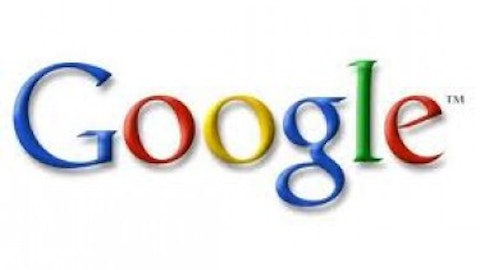Most investors are familiar with LinkedIn Corp (NYSE:LNKD), but seem to be unfamiliar with the company’s products, clients, and revenue streams. LinkedIn is the largest professional network on the internet with 218 million registered users, and has the potential to monetize on all those users by offering many different services at different prices. The company classifies revenues in three reporting lines – Talent Solutions, Marketing Solutions, Premium Subscriptions. Within each segment there are various products that the company sells, many of which are innovative, profitable, and relatively unknown.
Talent Solutions
LinkedIn Corp (NYSE:LNKD) offers a corporate recruiting platform through its Talent Solutions products, allowing businesses to scan the company’s vast talent pool to search potential candidates. The line of products pose a direct competition to the traditional offline products and services such as head hunters.
LinkedIn charges its corporate solutions customers on a subscription basis, at a substantial discount to the typical 21% of the first year salary charged by recruiters and head hunters. To put things in perspective, the fees associated with hiring a new employee with a $100,000 a year salary would cost around $21,000 in headhunter fees. The most expensive LinkedIn Corp (NYSE:LNKD)’s Recruiter product costs less than $5,000 per seat, so the potential cost savings for the customer are tremendous, making LinkedIn’s products extremely attractive.
Talent Solutions represents LinkedIn’s fastest growing segment, bringing in $523.6 million in 2012 compared to $260.9 million the year before.
Marketing Solutions
LinkedIn Corp (NYSE:LNKD) sells highly-targeted advertisements throughout its entire website using display ads, sponsored posts, and other formats. These, in conjunction with tools for analytics, are the core offerings that generate Marketing Solutions revenue. The ads are sold on a cost per impression or per click basis, so the key to the company’s future growth is in growing the user base and level of user engagement.
In terms of users, LinkedIn ended 2012 with 116 million unique users, a 26% growth from 2011. The company grew their page views to 37.5 billion in 2012 (up 27% from 2011) while maintaining 30% growth in its implied cost per impression. All this resulted in an impressive 66% growth of the Marketing Solutions revenue stream totaling $258.3 million in 2012. Advertisers are recognizing the value of the LinkedIn Corp (NYSE:LNKD) network and the ability for the platform to only display highly targeted and relevant add displays.
Premium Subscriptions
LinkedIn offers other subscription products such as Personal Plus, Business, Business Plus, and Executive Products. These offer access to premium features not available to users with a free membership. These premium accounts are offered to recruiters, sales professionals, and job seekers, and vary in price from $9.95 to $99.95 per month.
LinkedIn is a still developing a search marketing platform
Google Inc (NASDAQ:GOOG) can trace its tremendous success to its ability to leverage data to serve the most relevant ad to the right users at the right time. For this reason Google is highly regarded as the best search engine, and an ideal model for LinkedIn to follow. The cost per click for any merchant bidding on the Google platform is dictated by the Average Order Value as well as the conversion rate for any given SKU. Based on the Google Inc (NASDAQ:GOOG) model, LinkedIn Corp (NYSE:LNKD) can be viewed as undercharging for the leads and has ample room to move subscription prices higher in the future.
LinkedIn can maybe take a page out of Google’s book when it comes to advertising. Google Inc (NASDAQ:GOOG) announced a beta launch of image extensions, which will allow advertisers to add new visual elements to their search ads. Image extensions will show in some cases when Google determines that a search is likely for visual content. At the end of the day, LinkedIn Corp (NYSE:LNKD) users rely heavily on searching for new job prospects, or new clients. Google Inc (NASDAQ:GOOG) seems to understand that can be easier to ‘show’ rather than ‘tell’ when it comes to advertising.
Conclusion
When investors think of LinkedIn, it is almost automatically compared to Facebook Inc (NASDAQ:FB) which is not a fair comparison for several reasons. Firstly, Facebook is the ideal example of a great company with a great product, but a stock to be avoided. Facebook has received a lot of negative news being called a ‘fad,’ sentiments echoed by the company COO, who has said that “teens are using more of our competitors.” LinkedIn, on the other hand, is the only player in the professional networking domain with virtually no competition in terms of online social networking. When it comes to the revenue stream, Facebook does not offer any membership tiers and only collects revenues from advertisements, games, and small gimmicks like gifts. Facebook Inc (NASDAQ:FB) has also been under tremendous pressure to better monitor their ads, and have seen several large advertisers temporarily remove their ads from the site as they were displayed next to pages glorifying violence against women. Facebook acknowledged that their system to remove such negative pages is not working, and Facebook is not providing a positive environment for advertisers to reach consumers in a positive way. Now, all this being said, Facebook’s main source of revenue is under pressure, so any investor that places the two companies in the same field should avoid Facebook Inc (NASDAQ:FB) and be buying LinkedIn Corp (NYSE:LNKD).
Jayson Derrick has no position in any stocks mentioned. The Motley Fool recommends Facebook, Google Inc (NASDAQ:GOOG), and LinkedIn. The Motley Fool owns shares of Facebook Inc (NASDAQ:FB), Google, and LinkedIn Corp (NYSE:LNKD).
The article LinkedIn Has Plenty Of Room To Grow originally appeared on Fool.com.
Jayson is a member of The Motley Fool Blog Network — entries represent the personal opinion of the blogger and are not formally edited.
Copyright © 1995 – 2013 The Motley Fool, LLC. All rights reserved. The Motley Fool has a disclosure policy.






